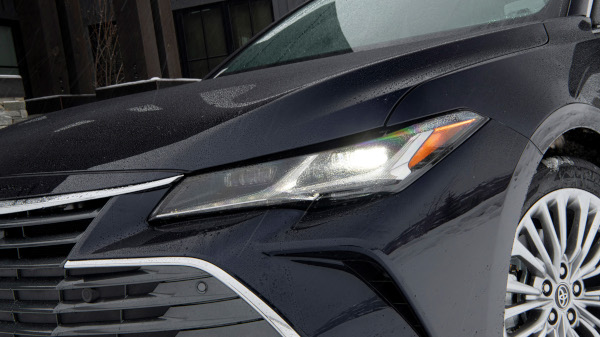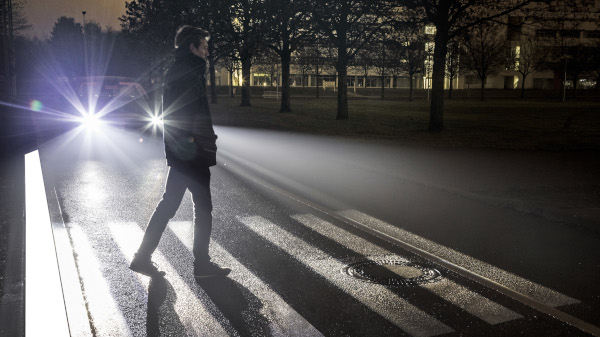This includes using the lamps to project information onto the road surface, and leveraging their housings to host sensors used for both ADAS and autonomous driving. But such innovations are also extending to tail lamps and even interior lights are taking on new functions.
Mercedes-Benz’s Toepfer says, “The most significant safety benefit of these lighting solutions happens if we can rise up the percentage of the high beam usage.” The automaker adopted ADB in 2013, in its E-Class and S-Class cars, and since 2016 uses what it calls Multi-Beam LED headlamps across its vehicle range, down to the entry-level A-Class. In the S-Class, that feature encompasses a technology dubbed Ultra-Range Hi-Beam, which throws light as far as 650 meters (versus the typical 380 to 400 meters).

The Maybach line’s DLP headlamps today comprise 1.3 million pixels (“micromirrors”), which include special benefits. Toepfer says more precisely distributed light and brightness control for each pixel, based on real-time input from the vehicle’s sensors gives details about its surroundings, and the ability to project light traces or symbols onto the roadway ahead — for example, to show the driver the width of the vehicle while navigating between construction barriers. And these headlamps will be brought down market to Mercedes-Benz’s “series production” cars in the near future, he adds.
Lighting innovation does not stop at the front of the vehicle. Because they don’t have to illuminate the vehicle’s path, the tail lamps are more design driven. “The front of the vehicle is something that most of the time is passing [other vehicles] quite fast,” however, “the back of the vehicle is something very characteristic because you are driving behind” it, Toepfer explains.
Nevertheless, tail lamps have benefited from engineering innovation, such as adaptive functions that make their LEDs brighter in daylight and less intense at night, he points out.
Today, ADAS and self-driving car technology have generated industry buzz around integrating sensors in the headlamp and taillamp assemblies directly. This is technically easy, he says, since those already contain the necessary electronic control units. It poses a challenge for vehicle stylists, though, by necessitating headlamps and tail lamps to be made larger to accommodate the addition.
“The main exterior lighting trend for most of the 2010s revolved around styling,” says Chris Grant, senior engineering manager at Toyota Motor North America’s research and development unit in Saline, MI. “We saw the adoption of LED signature images as critical styling elements spread from a few luxury brands to virtually all brands — luxury and mainstream. These LED signatures were first realized through [front] daytime running lights (DRLs) and taillights, but with advances in LED efficiency and optical design, we started seeing uniquely-styled LED low and high beam units, as well, deviating from traditional round projector units or large bucket reflectors.” For example, Grant offers, the 2019 Toyota Avalon headlamp features low-profile rectangular LED low and high beam units complemented by a double chevron-shaped LED signature DRL. Meanwhile, Lexus vehicles are adorned with a “triple-eye” LED low-and-high beam unit and L-shaped DRLs and taillights “to enhance brand recognition,” he says.
“While styling is still a major focus for lighting, more recent lighting trends have revolved around safety and emotional connection,” Grant says. “The most impactful safety improvements” have come through ADB technologies. Those have followed an evolutionary path from “matrix beams” that fade individual LEDs on and off to prevent glare to oncoming and preceding vehicles while maximizing illumination for the driver, to a system named BladeScan Type AHS (Adaptive High beam System) that Lexus unveiled last year.
Like the more sophisticated Maybach ADB system, BladeScan shines light from LEDs onto a blade mirror spinning at high speed, thus projecting the light onto a lens, and illuminating the road ahead. LEDs are switched on and off in sync with the rotation of the blade, illuminating portions of the road that may otherwise be difficult to see (such as the shoulder of the road), while not bothering other drivers.

But to keep system costs down, BladeScan uses an array of just 10 LEDs contained in a module sitting at the inner corner of each headlamp, alongside the triple-eye units, and the light is cast diagonally across the rotating blade mirror.
Regulators have not yet approved the technology for use in vehicles sold in the U.S., despite automakers’ pressing the issue. “As we wait to roll them out in the U.S., ADB systems are constantly evolving — resolution is improving, from less than 10 light segments to hundreds, thousands or even millions of light pixels, along with smoother transitions,” Grant says. “New features are being added, such as local dimming of reflective signs to prevent glare, and marking lights to highlight pedestrians, animals and other obstacles. The evolution of ADB systems is closely aligned with the evolution of vehicle camera systems, which provide most of the key information needed for ADB.”
Of course, it is easy to assume that when a car is self-driving it will not need illumination from a headlamp that is intended to help a human driver. Grant explains, the mix of LiDARs and camera sensors used in self-driving cars do require a mix of visible and invisible light to operate correctly.
More, some automakers have already incorporated ADAS sensors in lamp assemblies. For years both Ford and FCA have built radars for blind spot detection systems into pickup truck and SUV tail lamps, Audi has integrated radar sensors with headlamps, and General Motors has integrated two cameras into the center stop lamp of its Chevy Silverado pickup truck, Grant says.

I3, the flagship magazine from the Consumer Technology Association (CTA)®, focuses on innovation in technology, policy and business as well as the entrepreneurs, industry leaders and startups that grow the consumer technology industry. Subscriptions to i3 are available free to qualified participants in the consumer electronics industry.